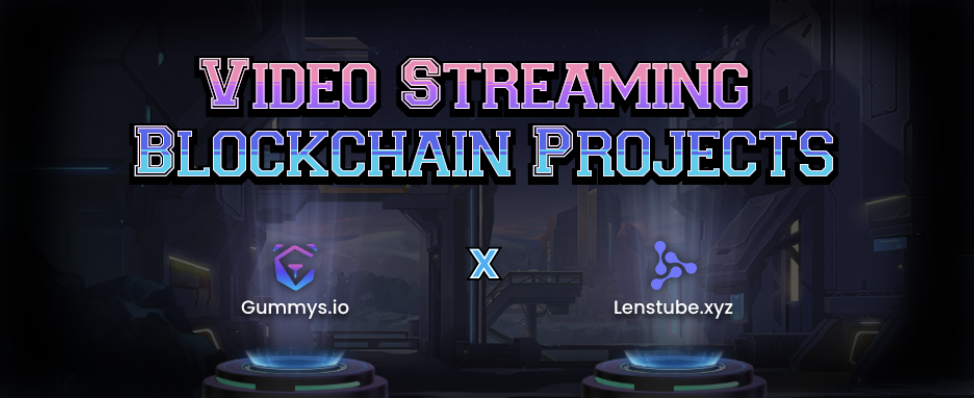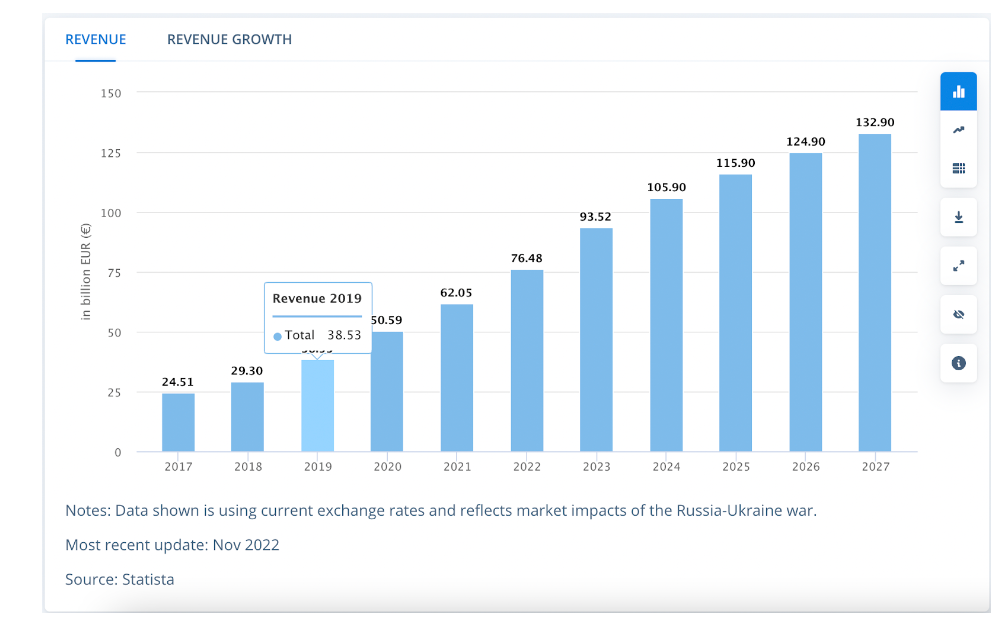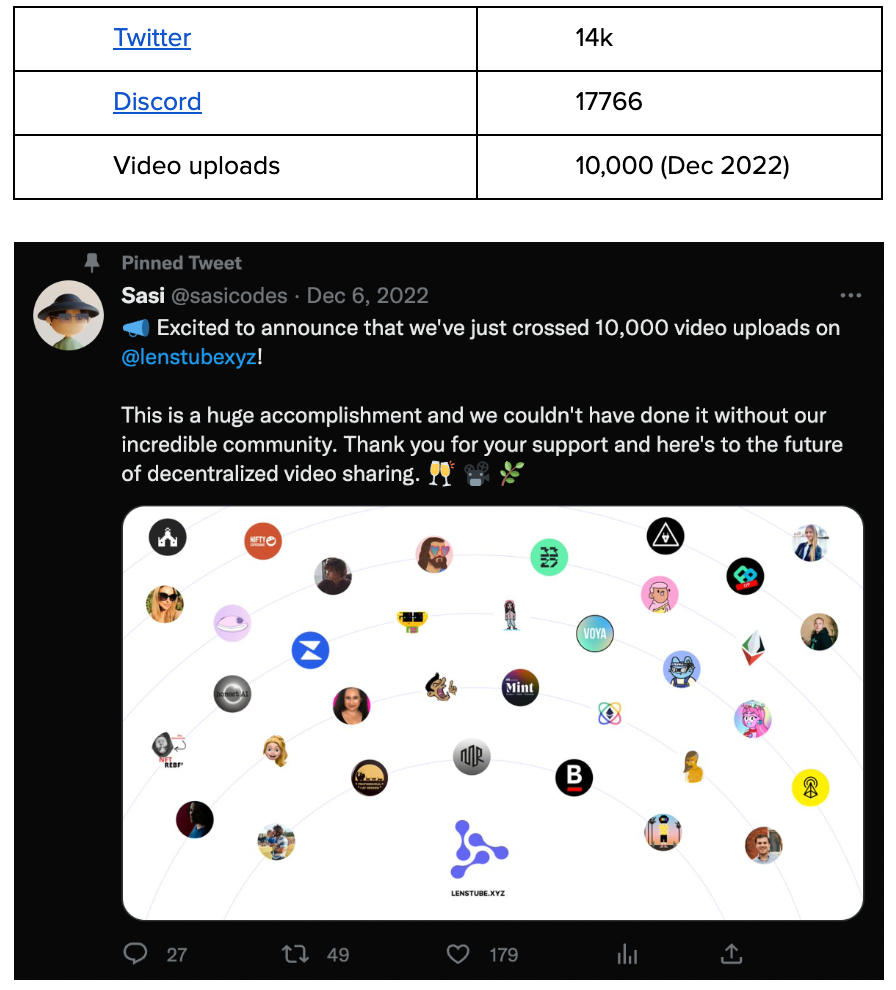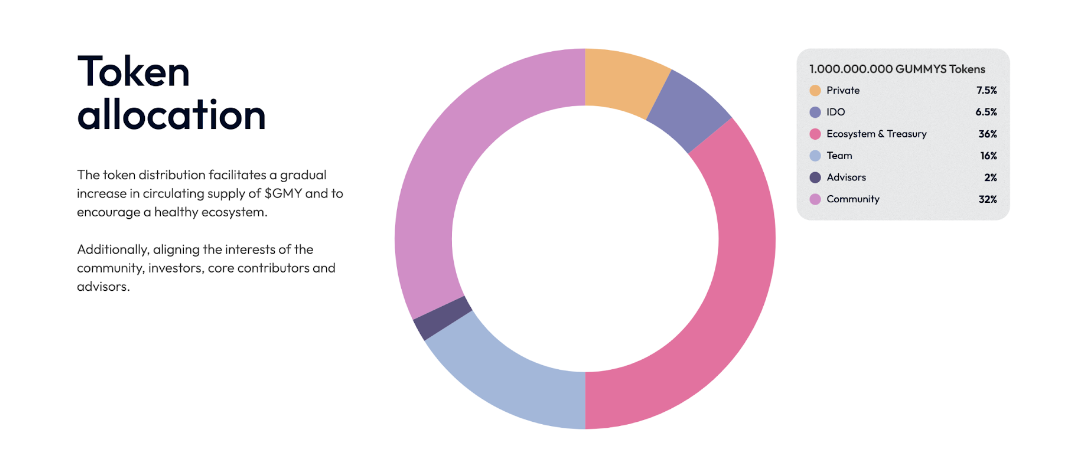
Decentralized Video Streaming Platforms
This article will give an introduction to the decentralized video streaming platforms, their potential to disrupt the current Web2.0 model, and the challenges that these platforms have to overcome to gain mass adoption, before looking at two early-stage projects, Lenstube.xyz and Gummys.io.
1.1 Food for Thought
oth projects are still considered early-stage, compared to more established projects like Chainflix and Theta.
Between the two selected projects in Gummys.io and Lenstube.xyz, it seems that Gummys.io is further along in the developmental stage where more considerations have been taken to enhance user experience and to gain traction. Gummys.io seems to be trying to create a whole economy around the platform which may eventually venture out of video and streaming, whereas there seems to be no such plans for Lenstube.xyz.
Creating decentralized platforms for watching and streaming may be a step in the right direction but there may be huge financial and non-financial switching costs for users to move across from Web2.0 to Web3.0 for the product team to consider.
1.2 User Mindset from Web2.0 to Web3.0
Consumers have gotten used to free-to-use platforms where paying for content may require a shift in mindset.
While many may be agnostic, a portion of consumers may be more sensitive to having their data collected and monetized to benefit the Big Tech companies
They may not be totally resistant to having their data collected and monetized, but they may want to have a say on how their data is being monetized, and what benefits they can derive.
The Brave browser method of monetization could be an interesting way to allow content consumers earn by opting in to privacy-preserving ads while applied to video streaming platforms, tiering user experiences.
To continue providing free services to content consumers, a product development insight would be to use an ads-based revenue model over a subscription-based revenue model.
1.3 Technical Obstacles
One main technical obstacle to overcome would be to figure out a decentralized way to facilitate moderation and censorship. Methods include going through a moderation and censorship DAO, using staked governance token through majority consensus or a randomly-selected council of a number of members.
Another technical obstacle to overcome would be to improve download speeds for content consumers while storing data in peer-to-peer storage systems without downtime, even as nodes malfunctions
The last technical obstacle to overcome would be to select a sustainable monetization model that incentivizes both content creators and consumers to keep them engaged on the platform
2. Sector Analysis
2.1 Total Addressable Market
People are changing their mode of entertainment from text and image-based formats to quick video illustrations.
With the tremendous growth of video streaming, the demand for network bandwidth and storage is huge. The storage, data transmission and streaming have been done by centralized cloud servers till now.
According to Statista, revenue in the Video Streaming (SVoD) segment is projected to reach US$93.52bn in 2023. Annual growth rate is expected to hit (CAGR 2023-2027) 9.77%, resulting in a projected market volume of US$132.90bn by 2027.

Currently, there are two main models of monetization, ads-based & subscription-based. An example of a Web2.0 ads-based model video platform would be Youtube, and a Web2.0 subscription-based model would be Netflix.
2.2 Potential for Disruption
Due to the centralized nature of these platforms, there is a lack of transparency for algorithms, data privacy & censorship.
Decentralized solutions allow for implementation of blockchain technology for prevention of censorship or control of the entire network by a single entity.
The video streaming industry can be revolutionized through the use of blockchain technology that enables ownership within the platform and a basis for decentralization, adding an extra layer of democracy and giving decision-making to the community.
Each blockchain video streaming infrastructure will usually consist of: 1) smart contract, 2) file storage, 3) content transcoder, and 4) an API layer.

2.3 Challenges to blockchain application to video & streaming
Currently it is challenging for blockchains to store complex data sources like videos or images efficiently, off-chain solutions like IPFS or simple peer-to-peer storage makes the data available.
Peer-to-peer storage systems may run into the problem of file availability when certain peers are disconnected, and resorting to a central relay node to provide missing files would lead to the original centralization problem.
The necessity of protecting copyright materials and content encryption may require solutions to encode the content by splitting it into smaller chunks and encrypting and storing these chunks in separate servers
Strong incentives to monetize both the content storage and content transcoding process, using proof-of-stake consensus mechanisms and rewards slashing as penalties may be required, along with incentives for creators to upload good content while also giving users a free-to-use content platform.
3. Project Introduction: Lenstube.xyz
3.1 Features
Lenstube.xyz is a Web3.0 video-sharing social media platform built on top of Lens protocol, a composable and decentralized social graph protocol that has gone live on Polygon mainnet since July 2022.
The platform has a similar layout to Youtube with Web3 native features including connecting crypto wallets, minting favorite content as NFTs, tipping creators with MATIC coins.
Video features include create channels, publish any video content or NFTs, collect video as NFT, mirror and share videos across Lens Dapps, set membership fees to your channel, notifications about new members, comments, mirrors, and mints, customize who can collect your video and associated fees, support any creator by sending a Tip, like and comment on videos, short videos called Bytes, watch later and recently watched videos library, video categories etc.
Lenstube.xyz uses Lens Protocol for its on-chain metadata and social graph, Arweave, a decentralized file storage system, for video storage, and Livepeer to process and playback the videos. Data is permanently stored on Polygon mainnet, capitalizing on the low gas fees.
3.2 Founding team
Project founder Sasidharan K, is a frontend engineer with Aave & Lenstube (Portfolio, Linkedin, Twitter), who has participated in hackathons and web3cons on Polygon, IPFS, and Filecoin
3.3 Tokenomics
The platform has no native token, Polygon MATIC is used for transactions
3.4 Performance Metrics
Followership & Engagement

3.6 Investments
Project founder Sasi has expressed that the project is not looking for funding at the moment.
4. Project Introduction: Gummys.io
4.1 Features
Gummys.io is a Web 3.0 peer-to-peer streaming service powered by blockchain technology that allows user interaction, content sharing and income generation.
The project is currently under Public Beta Phase, public access is closed for now until early access is available on through the waitlist airdrop campaign
The platform uses its own token (GUMMYS), and for each transaction made on the platform, a fee is charged to support the ecosystem. The treasury is managed to keep the ecosystem running smoothly.
A Watch-to-Earn and Stream-to-Earn model provides decentralized features, privacy, ownership of content, instant transactions, low fees, incentives and free speech
The platform has Web3 native features include connecting crypto wallets (E.g. Trust, Metamask, Unstoppable Domains), creating, minting and trading tokenised media content as NFTs, tipping creators with native GUMMY coins, generating income by watching videos and engaging within the community, and censorship regulated by the Community
Application features include publishing videos, live-streaming, AMA sessions, and short-form videos.
Gummys.io uses Lens Protocol for its on-chain metadata and social graph framework, IPFS, a decentralized file storage system, for video storage, and Livepeer to process and playback the videos. Data is permanently stored on Polygon mainnet, capitalizing on the low gas fees.
For moderation of content, there is a plan to appoint and reward moderators to facilitate this function
4.2 Founding team
Pasquale Sorrentino, CEO, ex-RaboBank, FedEx, & Accenture
Eunice Wong, COO, ex-Microsoft & Shell
Team includes experience from Cardano, Tezos, Cognizant, Polkadot, ABN Amro, Hyundai and Y-Combinator
Advisors includes executives at Google, Filecoin, and Protocol Labs
4.3 Tokenomics
A presale exercise started 16 Jan 2023, USD 100,000 at 0.0166 per token, but an announcement was made to pause the exercise, possibly because of the lack of demand.

The initial plan was for the tokens to be minted at the Token Generation Event, with a total of 1,000,000,000, with an allocation for Initial Fan Offering airdrops of 1,000,000

Token utility includes marketing boosts, user-tiering, tipping, advertising, NFTs minting, governance, and DeFi AMM.
4.4 Performance Metrics
Followership & Engagement

4.5 Recent News
Recent achievements include receiving a development grant from Lens Protocol in June 2022, and attaining 1st place in the Chainlink Spring Hackathon, Filecoin — Storage Wizard category
Developmental partnerships for the project include Attrace, the trustless Referral Protocol for Web3, Polygon Studios for NFT minting and transactions, Unstoppable Domains for digital identity management, Livepeer, Chainlink,, Aave for DeFi activities, Protocol Labs for R&D, Dolby.io for sight and sound technology, Certik for Web3.0 security, Synaps for identity verification, Gotbit for liquidity, Filecoin for decentralized storage management
4.6 Investments
The project has previously raised funds with CVVC in pre-seed round for unknown amount
5. Project Comparisons: Gummys.io
5.1 Similarities
5.1.1 Lens Protocol
Both projects are plugged into the Lens Protocol social graph infrastructure where content creators may find it convenient to build a following without having to juggle different platforms at the same time.
5.1.2 Early Stages
Lens Protocol is still in an early-stage where the Lens Handle required for content creators and consumers is only available for a select group currently. User metrics, though unreported, may not be accurately reflective of demand for such a product.
5.1.3 Lack of User Metrics
Source code and contract addresses for both projects are not revealed yet, user metrics are unavailable for comparison.
5.2 Differences
5.2.1 Team
Lenstube.xyz’s team seems to only consist of the founder, and may be too lean to scale up operations. Gummys.io seems to have a larger and more experienced team that can take the project further, with professional experience in-and-outside of tech.
5.2.2 Funding
Gummys.io has VC backing for a pre-seed funding round with incubation support, whereas Lenstube.xyz may not have the financial muscle and supporting network to help the project grow in the near-term until it gets more funding.
5.2.3 Reward System
While both projects have clear incentives for the content creators, Gummys.io has a clearer incentive for content consumers through watching content and engaging in the community. It is important to think through the incentives for content consumers since a big part of monetization for content creators comes from consumer activities.
5.2.4 Marketing & PR
Gummys.io has garnered more traction on Discord, Twitter, Telegram and Medium, which could also be related to funding where marketing dollars can be spent on content creation and community management.
5.2.5 Token Economy
While NFT trading and liquidity providence yields may be a draw for participants, the use of a native coin for Gummys.io may lead to resources being diverted to treasury management and defending against speculative trading activity which may cause fluctuation in earnings for content creators. Other than the 6% tokens for IDO, it is also unclear how the public can participate in the project.
5.2.6 Governance
Gummys.io has a governance model for moderation and censorship of content managed by the community, though it is unclear exactly how these community moderators will be selected.


